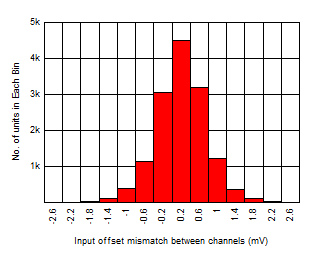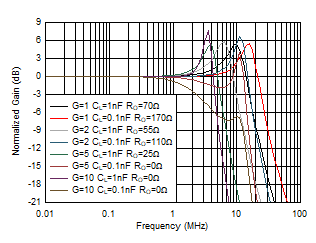ZHCSJY2A June 2019 – September 2019 OPA2834
PRODUCTION DATA.
- 1 特性
- 2 应用
- 3 说明
- 4 修订历史记录
- 5 Device Comparison Table
- 6 Pin Configuration and Functions
- 7 Specifications
- 8 Detailed Description
- 9 Application and Implementation
- 10Power Supply Recommendations
- 11Layout
- 12器件和文档支持
- 13机械、封装和可订购信息
7.8 Typical Characteristics: ±2.5-V to ±1.5-V Split Supply
with PD = VCC and TA ≈ 25°C , gain mentioned in V/V (unless otherwise noted)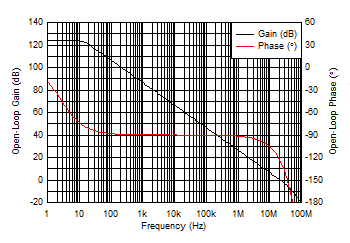
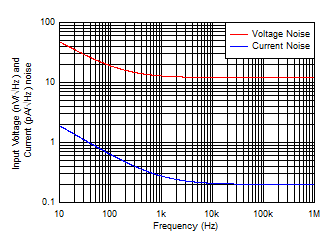
| Measured then fit to ideal 1/f model |
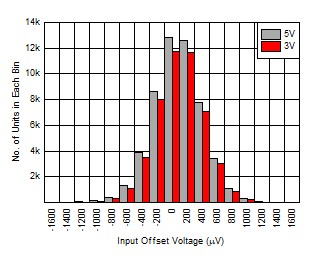
| 54000 units at each supply voltage |
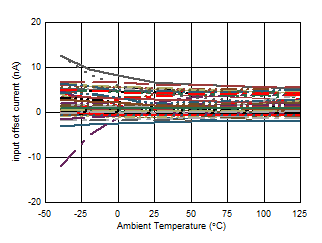
| 32 units at 5-V and 3-V supply |
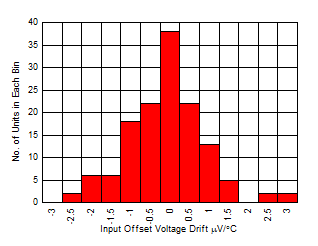
| 136 units, –40°C to +125°C |
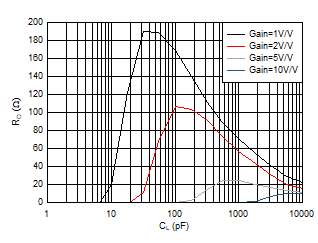
| See Figure 49,
Recommended value of RO for targeting 30° phase margin |
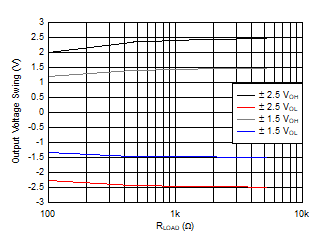
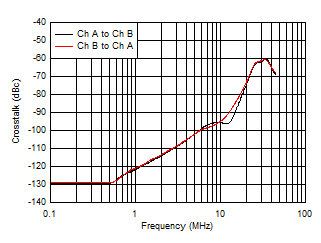

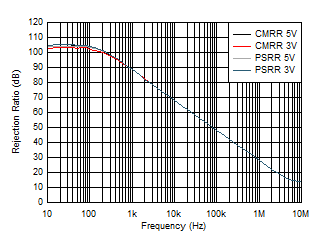
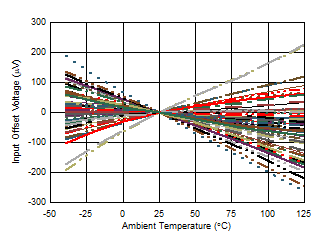
| 32 units at 5-V and 3-V supply, Input offset voltage calibrated to 0V at 25°C |
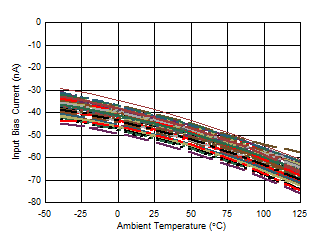
| 32 units at 5-V and 3-V supply |
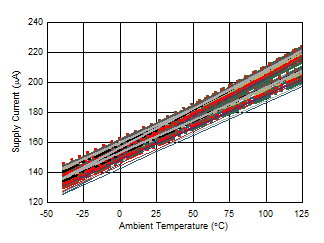
| 32 units at 5-V and 3-V supply |
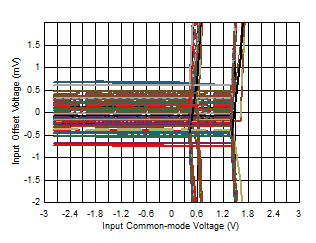
| 32 units at 5-V and 3-V supplies |
